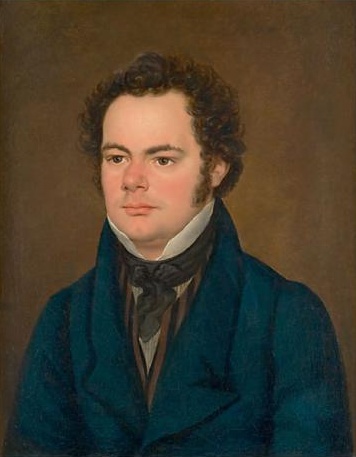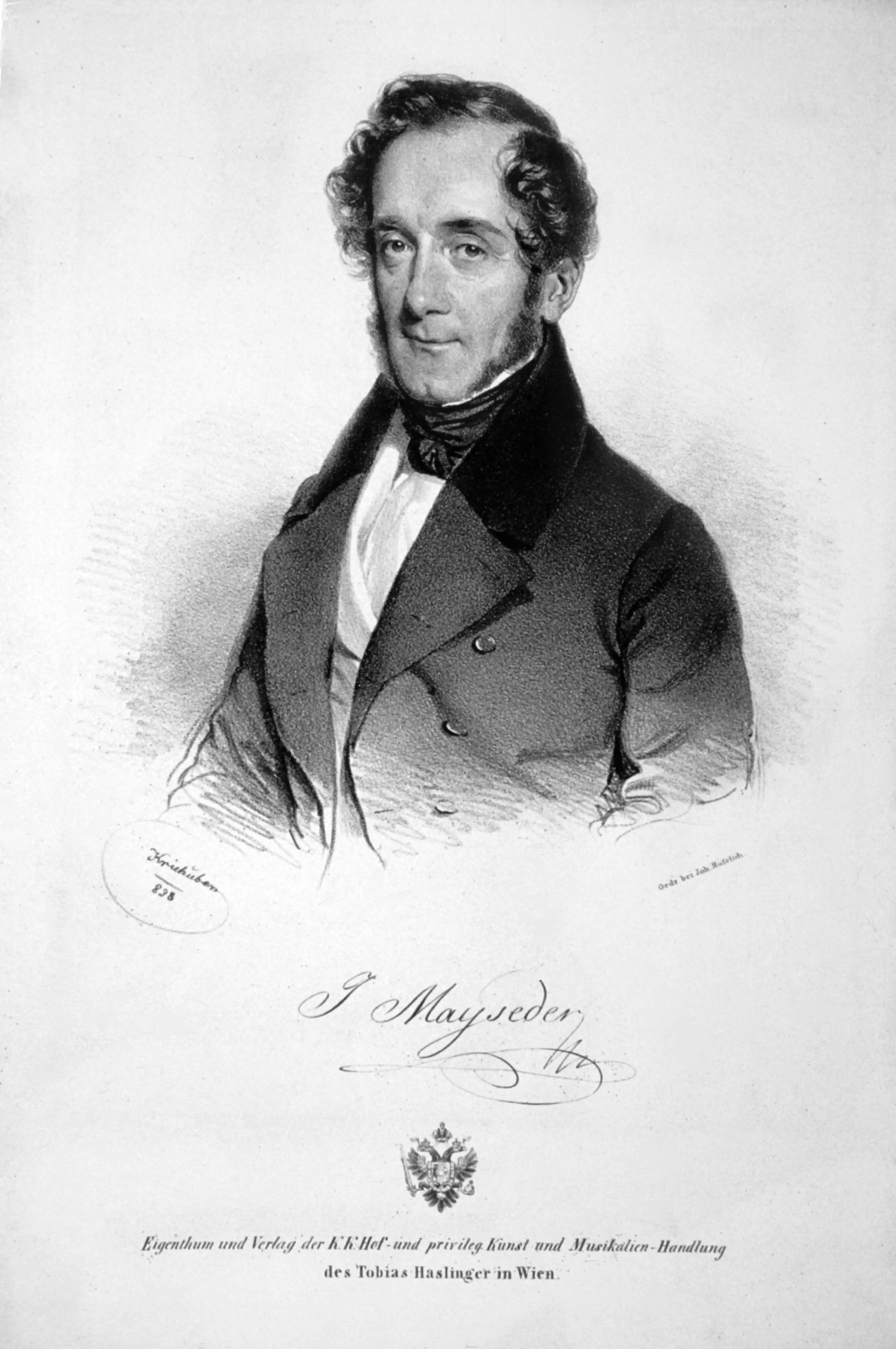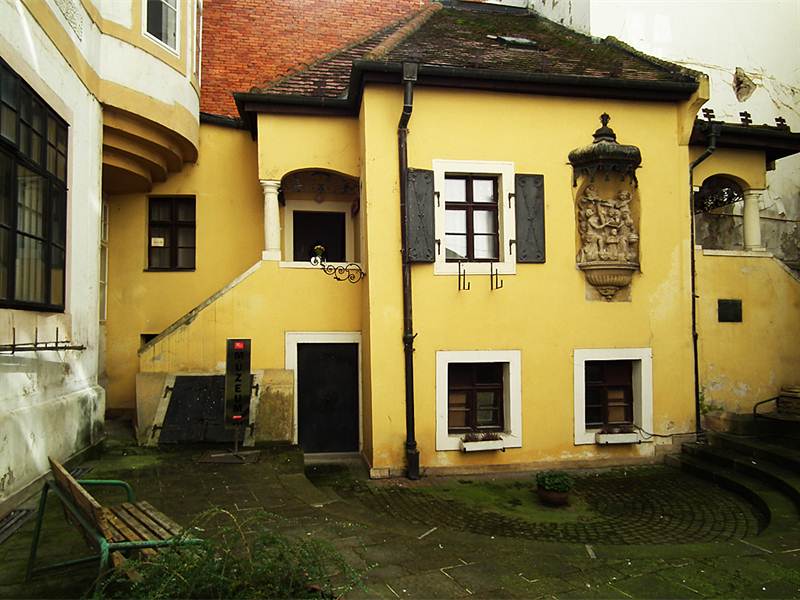|
1815 In Music
Events * March 24 - The Handel and Haydn Society is founded as an oratorio society in Boston by a group of Boston merchants and musicians *Spanish classical guitarist Fernando Sor moves to London, England to try to garner some success there. *Summer – Gioachino Rossini goes to Naples as musical and artistic director of the Teatro San Carlo. His first opera for this theatre, '' Elisabetta, regina d'Inghilterra'', premieres here on October 4. * December 25 – The Handel and Haydn Society, the oldest continuously performing arts organization in the United States, gives its first performance, at the King's Chapel in Boston. Classical music *William Beale – "Come let us join the Roundelay" * Ludwig van Beethoven ** Cello Sonatas Nos. 4 and 5, Op. 102. Published in 1817. **25 Scottish Songs, Op. 108 **'' Meeresstille und glückliche Fahrt'', Op. 112, for chorus and orchestra **'' Zur Namensfeier'' overture, Op. 115 **''Leonore Prohaska'', WoO 96 **Es ist vollbracht, ... [...More Info...] [...Related Items...] OR: [Wikipedia] [Google] [Baidu] |
March 24
Events Pre-1600 * 1199 – King Richard I of England is wounded by a crossbow bolt while fighting in France, leading to his death on April 6. *1387 – English victory over a Franco- Castilian-Flemish fleet in the Battle of Margate off the coast of Margate. *1401 – Turco-Mongol emperor Timur sacks Damascus. 1601–1900 * 1603 – James VI of Scotland is proclaimed King James I of England and Ireland, upon the death of Elizabeth I. * 1603 – Tokugawa Ieyasu is granted the title of ''shōgun'' from Emperor Go-Yōzei, and establishes the Tokugawa shogunate in Edo, Japan. * 1663 – The Province of Carolina is granted by charter to eight Lords Proprietor in reward for their assistance in restoring Charles II of England to the throne. * 1720 – Count Frederick of Hesse-Kassel is elected King of Sweden by the Riksdag of the Estates, after his consort Ulrika Eleonora abdicated the throne on 29 February. * 1721 – Johann Sebastian Bach dedica ... [...More Info...] [...Related Items...] OR: [Wikipedia] [Google] [Baidu] |
Bartolomeo Campagnoli
Bartolomeo Campagnoli (September 10, 1751 – November 6, 1827) was an Italian violinist and composer. Campagnoli was a virtuoso violinist who toured Europe propagating the 18th Century Italian violin style. He also has a number of compositions to his name, notably: * ''Divertissements'' for solo violin, which are highly regarded in music schools * ''41 Caprices'' for solo viola, frequently used by student violists * ''Nouvelle Méthode'' for the violin (1827). * A number of ''Duos for flute and violin'' * 30 ''Preludes'' for violin in all 24 keys Life Bartolomeo was born in Cento, where his father was a trader. He studied the violin locally, firstly in Bologna, and then from 1763 in Modena with Paul Guastarobba, who had studied with the noted violinist Giuseppe Tartini. He returned home in 1766 and played in a local orchestra. In 1768 he studied further in Venice and Padua, where Tartini still lived. [...More Info...] [...Related Items...] OR: [Wikipedia] [Google] [Baidu] |
Rastlose Liebe
"Rastlose Liebe" ("Restless Love") is a Lied composed by Franz Schubert and published in July 1821 as Op. 5, No. 1. In Otto Erich Deutsch's catalog it is D138. The song, dedicated to Anton Salieri, is based on a text by Johann Wolfgang von Goethe, written during a snowstorm in the Thuringian Forest. Schubert made two settings of "Rastlose Liebe": the first, composed 19 May 1815, (original key: E major), was published as Op. 5 No. 1. Its first public performance was given by the tenor Ludwig Titze at a Gesellschaft der Musikfreunde concert in Vienna, on 29 January 1824. The song has been performed by both male and female voices. The tempo marking of the first version is "Schnell, mit Leidenschaft" (Fast, with passion). The piece contains great dynamic variation. The second setting, in D major, tempo 'Schnell', written in 1821, was published in 1970 in part IV, volume 1 of the New Schubert Edition. The poem was also set by Robert Schumann in his Sechs Lieder (Op. 33) an ... [...More Info...] [...Related Items...] OR: [Wikipedia] [Google] [Baidu] |
List Of Songs By Franz Schubert
The following is a list of the complete secular vocal output composed by Franz Schubert (31 January 1797 – 19 November 1828). It is divided into eleven sections, and attempts to reflect the most current information with regards to Schubert's catalogue. The works contained in this list refer to those found primarily in the following two series of the New Schubert Edition (NSE) edition: * Series III: Partsongs, Choruses and Cantatas (Mehrstimmige Gesänge) * Series IV: Songs for solo voice (Lieder) Note however that some of Schubert's song cycles contain both Lieder and part songs. The list below includes the following information: '' * D – the catalogue number assigned by Otto Erich Deutsch or NSE authorities * Genre – the musical genre to which the piece belongs * Title – the title of the work * Incipit – the first line(s) of text, as pertaining to vocal works * Scoring – the instrumentation and/or vocal forces required for the work * Informal Title – any addition ... [...More Info...] [...Related Items...] OR: [Wikipedia] [Google] [Baidu] |
Franz Schubert
Franz Peter Schubert (; 31 January 179719 November 1828) was an Austrian composer of the late Classical and early Romantic eras. Despite his short lifetime, Schubert left behind a vast ''oeuvre'', including more than 600 secular vocal works (mainly lieder), seven complete symphonies, sacred music, opera Opera is a form of theatre in which music is a fundamental component and dramatic roles are taken by singers. Such a "work" (the literal translation of the Italian word "opera") is typically a collaboration between a composer and a libr ...s, incidental music, and a large body of piano and chamber music. His major works include "Erlkönig (Schubert), Erlkönig" (D. 328), the Trout Quintet, Piano Quintet in A major, D. 667 (''Trout Quintet''), the Symphony No. 8 (Schubert), Symphony No. 8 in B minor, D. 759 (''Unfinished Symphony''), the Symphony No. 9 (Schubert), "Great" Symphony No. 9 in C major, D. 944, the String Quintet (Schubert), String Quintet (D. 956), ... [...More Info...] [...Related Items...] OR: [Wikipedia] [Google] [Baidu] |
Ferdinand Ries
Ferdinand Ries (baptised 28 November 1784 – 13 January 1838) was a German composer. Ries was a friend, pupil and secretary of Ludwig van Beethoven. He composed eight symphonies, a violin concerto, nine piano concertos (the first concerto is not published), three operas, and numerous other works, including 26 string quartets. In 1838 he published a collection of reminiscences of his teacher Beethoven, co-written with Franz Wegeler. The symphonies, some chamber works—most of them with piano—his violin concerto and his piano concertos have been recorded, exhibiting a style which, given his connection to Beethoven, lies between the Classical and early Romantic styles. Early life Ries was born into a musical family of Bonn. His grandfather, Johann Ries (1723–1784), was appointed court trumpeter to the Elector of Cologne at Bonn. Ries was the eldest son of the violinist and Archbishopric Music Director Franz Anton Ries (1755–1846) and the brother of violinist and co ... [...More Info...] [...Related Items...] OR: [Wikipedia] [Google] [Baidu] |
Anton Reicha
Anton (Antonín, Antoine) Joseph Reicha (Rejcha) (26 February 1770 – 28 May 1836) was a Czech-born, Bavarian-educated, later naturalized French composer and music theorist. A contemporary and lifelong friend of Beethoven, he is now best remembered for his substantial early contributions to the wind quintet literature and his role as teacher of pupils including Franz Liszt, Hector Berlioz and César Franck. He was also an accomplished theorist, and wrote several treatises on various aspects of composition. Some of his theoretical work dealt with experimental methods of composition, which he applied in a variety of works such as fugues and études for piano and string quartet. None of the advanced ideas he advocated in the most radical of his music and writings, such as polyrhythm, polytonality and microtonal music, were accepted or employed by other nineteenth-century composers. Due to Reicha's unwillingness to have his music published (like Michael Haydn before him), he fell ... [...More Info...] [...Related Items...] OR: [Wikipedia] [Google] [Baidu] |
Giacomo Meyerbeer
Giacomo Meyerbeer (born Jakob Liebmann Beer; 5 September 1791 – 2 May 1864) was a German opera composer, "the most frequently performed opera composer during the nineteenth century, linking Mozart and Wagner". With his 1831 opera ''Robert le diable'' and its successors, he gave the genre of grand opera 'decisive character'. Meyerbeer's grand opera style was achieved by his merging of German orchestra style with Italian vocal tradition. These were employed in the context of sensational and melodramatic libretti created by Eugène Scribe and were enhanced by the up-to-date theatre technology of the Paris Opéra. They set a standard which helped to maintain Paris as the opera capital of the nineteenth century. Born to a rich Jewish family, Meyerbeer began his musical career as a pianist but soon decided to devote himself to opera, spending several years in Italy studying and composing. His 1824 opera '' Il crociato in Egitto'' was the first to bring him Europe-wide reputation, but ... [...More Info...] [...Related Items...] OR: [Wikipedia] [Google] [Baidu] |
Joseph Mayseder
Joseph Mayseder (27 October 1789 – 21 November 1863) was an Austrian violin virtuoso and composer. Biography Mayseder showed musical promise from an early age, and was a student of Joseph Suche (1797), Paul Wranitzky (1798) and Ignaz Schuppanzigh. By the age of eleven, he was performing in public concerts at the Augarten in Vienna. He received lessons in composition from Emanuel Aloys Förster. In 1810, he was appointed concertmaster of the Vienna Court Opera. In 1816, he was the violin soloist of the Hofburg Palace chapel orchestra, which he conducted from 1836. He was a major quartet player, as well as a teacher and composer for his instrument. Among his students were the highly esteemed Heinrich Wilhelm Ernst. Mayseder was the recipient of multiple awards and honorary memberships. He was appointed to the in Rome, along with Franz Liszt and others. He was awarded the Knight's Cross of the Order of Franz Joseph The Imperial Austrian Order of Franz Joseph (german: Kaiserl ... [...More Info...] [...Related Items...] OR: [Wikipedia] [Google] [Baidu] |
Franz Krommer
Franz Krommer ( cz, František Vincenc Kramář; 27 November 1759 in Kamenice u Jihlavy – 8 January 1831 in Vienna) was a Czech composer of classical music and violinist. He was one of the most popular composers in the 19th century Vienna. Today he is mostly known for his clarinet concertos. Life Franz Krommer was born as František Vincenc Kramář in Kamenice. But even his parents were going by a Germanized version of their surname – Krommer. His father was an innkeeper in Kamenice until the family moved to Třebíč in 1773. From 1773 to 1776, Franz studied violin and organ with his uncle, Antonín Mattias Kramář (1742-1804), in Tuřany. He became an organist here along with his uncle in 1777. In 1785 he moved to Vienna and later to Simontornya in Hungary, where he was a violinist and later a Kapellmeister for the orchestra of the Count of Limburg Stirum. In 1790, Krommer was named choirmaster at the Cathedral of Pécs, Hungary. In 1793 he became a Kapellmeister to ... [...More Info...] [...Related Items...] OR: [Wikipedia] [Google] [Baidu] |
Johann Nepomuk Hummel
Johann Nepomuk Hummel (14 November 177817 October 1837) was an Austrian composer and virtuoso pianist. His music reflects the Transition from Classical to Romantic music, transition from the Classical period (music), Classical to the Romantic music, Romantic musical era. He was a pupil of Mozart, Salieri and Muzio Clementi, Clementi. He also knew Beethoven and Schubert. Life Early life Hummel was born as an only child (which was unusual for that period) in Pressburg, Kingdom of Hungary (now Bratislava, Slovakia). He was named after the Czech patron saint John of Nepomuk. His father, Johannes Hummel, was the director of the Imperial School of Military Music in Vienna; his mother, Margarethe Sommer Hummel, was the widow of the wigmaker Josef Ludwig. The couple married just four months beforehand. Hummel was a child prodigy. At the age of eight, he was offered music lessons by the classical composer Wolfgang Amadeus Mozart, who was impressed with his ability. Hummel was taught ... [...More Info...] [...Related Items...] OR: [Wikipedia] [Google] [Baidu] |


.png)




